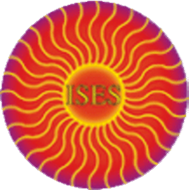
15-19 November, 2010 - Brugge, Belgium
Posters session 2
Spacecraft Environments and Effects
| Session: | Poster session 2 (12) |
| Type: | Poster presentation |
| Date: | Wednesday, November 17, 2010 |
| Time: | 16:30 - 18:30 |
| Chair: | |
| Co-chair: | |
| Remarks: |
| Seq | Time | Title | Abs No | ||||
| 1 | 00:00 |
The Influence of the Plasmasphere in the Space Environment
Pierrard, Viviane1; Benck, Sylvie2; Darrouzet, Fabien1; Cabrera, Juan2; Voiculescu, Mirela3 1Belgian Institute for Space Aeronomy, BELGIUM; 2Center for Space Radiations, UCL, BELGIUM; 33. Faculty of Sciences and Environment, Dunarea de Jos University of Galati, ROMANIA
The plasmasphere is the extension of the ionosphere at low and middle latitude. This highly dynamic region is disturbed during geomagnetic storms and substorms, with formation of a sharp plasmapause closer to the Earth and generation of a plume in the afternoon MLT sector. The plasmaspheric TEC (Total Electron Content) is quite variable during these periods and has effect on the Global Positioning System (GPS). The plasmaspheric region is populated by cold plasma from the ionosphere and has direct influence on other regions of the magnetosphere. For instance, radiation belt energetic particle populations are very sensitive to the core plasmasphere distribution and specifically to the position of the plasmapause. There is a relationship between the position of the plasmapause and the inner edge of the outer radiation belt. These energetic particles of the radiation belts are problematic for spacecraft and astronauts. |
|||||
| 2 | 00:00 |
DEMOCRITUS: An Adaptive Particle In Cell (PIC) Code for teh Simulation of Satellite-Environment Interactions
Lapenta, Giovanni KU Leuven, BELGIUM
A new method for the simulation of the interactions between a spacecraft and its environment is presented. The method
is based on the
particle in cell technique for the description of the plasma and
on the immersed boundary method for the description of the
interactions between materials and plasma particles. A
technique to adapt the local number of particles and grid adaptation are used to reduce the truncation
error and the noise of the simulations,
to increase
the accuracy per unit cost. |
|||||
| 3 | 00:00 |
Instantaneous Wave Vector of low Frequency Waves in the Downstream of Earth's Bow Shock
Nathaniel, Ekong; Beloff, N.; Buckley, A. University of Sussex, UNITED KINGDOM Knowing the various constituent signals embedded in data collected in the downstream of Earth's bow shock by FGM instrument on Cluster II spacecraft using empirical mode decomposition (EMD), we carefully extract the components with physical meaning and sense reflecting the data called intrinsic mode functions (imf). The frequency decomposition of the resulting wave modes is based on Simple Hilbert Transform (SHT) leading to the determination of instantaneous frequencies. Every instantaneous local wavenumber associated with the instantaneous frequencies were then determined. |
|||||
| 4 | 00:00 |
Simulation of Surface charging in Dusty Plasma Environment
Anuar, Abul1; Honary, Farideh1; Hapgood, Mike2 1Lancaster University, UNITED KINGDOM; 2CLRC Royal Appleton Laboratory, UNITED KINGDOM Surface charging has proven to be a factor that affect spacecraft operation in space but there are very few discussion on charging in dusty plasma environment. In dusty plasma, the presence of third plasma constituent, complicates spacecraft charging problem as the much heavier dust but with large number of residing charge affect both the plasma and spacecraft properties. Simulating this environment has been difficult due to the multiple interactions and timescale involved. This paper looks at the possibility of using SPIS, a toolkit originally intended to study spacecraft-plasma interactions, to simulate charging in dusty plasma environment by introducing additional dust particle with an ion-like behaviour into the code. This requires approximation on the dusty plasma properties in terms of its mass, shape, charge and density. Dusty plasma interactions with a simple spherical probe are observed for various conditions including real dusty plasma environment such as on the lunar terminator atmosphere. Results show that dusty plasma affect the probe surface and plasma potential by slowing the charging process, with the probe surface potential depends greatly on the dust properties. |
|||||
| 5 | 00:00 |
Earth Radiation Environment in the Declining Phase of the 23rd Solar Cycle
Dachev, Tsvetan1; Ploc, Ondrej2 1Space and Solar-Terrestrial Research Institute at Bulgarian Academy of Sciences, Sofia, Bulgaria, td, BULGARIA; 2Nuclear Physics Institute at Czech Academy of Sciences, Prague, Czech Republic, ploc@ujf.cas.cz, CZECH REPUBLIC
The fluxes and absorbed dose rates from Galactic Cosmic Rays (GCR) and their secondary were continuously measured in Low Earth Orbit (LEO) and at aircraft altitudes with Liulin type spectrometers between March 2001 and September 2009. This period cover the unique maximum of GCR flux observed in the end of 23rd solar cycle. The measurements on aircraft were performed in cooperation with Czech Airlines (CSA). The detector was repeatedly placed in the cabin of airbus A310-300 for approximately 50 days. 24 runs were performed, with more than 2000 flights and 13500 flight hours on routes over the Atlantic Ocean mainly. Well seen increase of the dose rates from about 1.6 to 2.5 µGyh-1 connected with flux increase from 0.485 to 0.576 cm-2s-1 is found at aircraft altitudes during the declining of the solar cycle. The obtained experimental data are compared with computational models like CARI and EPCARD. The fluxes and dose rates from GCR were also independently measured with analogical instruments onboard following spacecraft: International Space Station (ISS) in 2001 and 2008-2009; Foton-M2/M3 satellites in June 2005 and September 2007 respectively and on Indian Chandrayaan-1 satellite in 2008-2009. During the declining phase of the solar cycle the dose rates at L>4.5 increases in average from about 6.1 to 13.5 µGyh-1. The flux increase in average from 1.64 to 3.23 cm-2s-1.
The analysis of the GCR flux and dose rate latitudinal profiles gives the following: 1) The latitudinal profile at each vehicle shows similar shape with a minimum close to the geomagnetic equator, rising up part up to L=3.5 and knee followed by fixed values or smaller slope of the curve at high L values; 2) The fluxes and doses in the equatorial region do not show solar activity dependence; 3) The fluxes and dose rates in the range 1.5 |
|||||
| 6 | 00:00 |
Solar Corona and Plasma Effects on Radio Frequency Waves
Dehant, Veronique; Nkono, Collin; Rosenblatt, Pascal Royal Observatory of Belgium, BELGIUM Solar corona (plasma) effects on radio signal waves for three different frequency bands S (2.3 GHz), X (8.4 GHz), and Ka (32 GHz), currently used to track probes in the solar system, have been computed using different models of the total electron content (TEC) along the propagation path between the Earth and Mars. The Earth-Mars-Sun configuration has been obtained from the planetary ephemerides DE421 (using SPICE kernels). This configuration is expressed as a function of the Sun-Earth-Probe (SEP) angles (the probe being in close orbit to Mars). We used the TEC values provided by the different models proposed in the literature in order to estimate the TEC along the propagation path (STEC, for Slant TEC). From these model-dependent STEC estimates, the time delay on the wave propagation as well as the associated frequency shift with a 10 seconds sampling time have been obtained for each of the three frequency bands. For the X-band mostly used in radio science, we have obtained estimates differing by up to several orders of magnitude due to the different STEC values derived from different models of TEC. For example, if the propagation path passes near the Sun such that SEP angle is 1.55° the STEC is ranging from 4.6x1020 electron/m2 to 6.07x1016 electron/m2, which corresponds to a time delay range between 0.87 ìs and 1.15x10-4 ìs, respectively. For SEP angles between 2° and 8°, the range of the different time delay values reduces to 2.8x10-1 ìs and becomes as small as 1.6x10-2 ìs for SEP angles larger than 8° (1x10-2 ìs is about the order of magnitude of the radioscience instrument precision). We also extend the computation using a radially-symmetric model of the plasma to more sophisticated models such as the ENLIL 3D magnetohydrodynamic model of the solar wind propagation in the heliosphere. |
|||||
| 7 | 00:00 |
Radiation-Induced Failure Rate Predictions for METOP HRPT Operations
Evans, Hugh; Daly, Eamonn; Santin, Giovanni; Strijk, S.; Sturesson, S. ESA, NETHERLANDS Single event effects in components arise from interactions with high energy cosmic rays, trapped protons and solar energetic particles. The geographic distribution of these particles in a sun synchronous orbit results in a geographic variability in the risk of an upset occurring. By considering geomagnetic shielding effectiveness and models of the trapped proton belt, the risk of upsets has been characterised for specific components in the METOP HRPT unit. The SPENVIS/CREME software has been modified to provide LET spectra for Gallium Arsenide (GaAs) components and the geomagnetic shielding component updated to include the IGRF field model. |
|||||
| 8 | 00:00 |
Space Weather on the Moon
Cipriani, F.; Hilgers, A.; Rodgers, D.; Nieminen, P.; Nieminen, P. ESA, NETHERLANDS Several missions to the Moon have been recently completed or are planned including some landing payloads: ESA Lunar Lander, NASA Lunar Atmospheric and Dust Environment Explorer and International Lunar Network, CNSA Chang’e X. The Lunar environment is very different from the Earth’s because of the absence of atmosphere and magnetic field. It is closer to the interplanetary environment (solar wind, galactic cosmic rays, solar energetic particles) with some features related to the interaction of the Moon’s surface with highly variable particles populations along the Moon’s orbit (solar wind, magnetosheath, Earth’s magnetotail and the lunar wake). Sunlit surfaces may charge positively due to photoelectron emission (~10V) while lunar wake / night-side surfaces, and shadowed areas within craters or regions with complex topography (especially south pole terrains) may develop highly negative potentials (up to several kV during SEP events). Exposure to such environment during extreme solar activity may therefore produce surface charging hazards similar to those in GEO orbits. The complexity is increased by the presence of active charged lunar dust, which can levitate, become energized, or stick to materials causing clogging and obscuration. In addition, cosmic rays and solar energetic particles interact with the lunar regolith at a few meters depth and with human-built systems. Radiation hazards to humans and unmanned systems have to be considered, including the contribution from the production of secondary particles. For lunar mission including orbiters, landers and human elements, a large number of situations has to be considered. A review is made of the different types of space environments to consider for lunar missions, of their potential impacts on space system and of the possibilities to monitor and predict them. |
|||||
| 9 | 00:00 |
CR Ionization in the Earth Atmosphere on 20 January 2005 Obtained with Monte Carlo Simulation
Velinov, Peter1; Mishev, Alexander2 1Space and Solar-Terrestrial Research Institute, BULGARIA; 2Nuclear Regulatory Agency, Sofaa, BULGARIA
The Sun sporadically emits cosmic rays (CR) of sufficient energy and intensity to increase radiation levels on the surface of Earth. It was identified that solar protons of MeV energies cause excess in the ionospheric D-region. CR produce also ionization over the polar caps following some major solar disturbances. The production rate may be evaluated from the proton flux using the basic physics of air ionization and an appropriate atmospheric model. In this work we present studies related with 20th January 2005 solar event. The solar eruptive-fare event of 20 January 2005 is of big attention of the solar and solar-terrestrial community due to its outstanding characteristics. It was characterized by strong gamma-ray emission with energy, at least, up to 200 MeV; by a fast halo-type coronal mass ejection. The most important, it was accompanied by an unusually hard-spectrum solar energetic particle flux near Earth including the second largest ground-level enhancement in the observational history. The strongest solar proton event was on 23 February 1956. Another special feature of this event is that during the first hour the proton spectrum parameters are dramatically changing. The changes of the spectra are connected with particle acceleration mechanism preceding the coronal mass ejection. It is possible to fit the spectra, extending from <0.1 to >100 MeV/nucl with double-power-law form. Afterwards it is a matter of algorithm to estimate to solar cosmic ray induced ionization in the atmosphere. The event of 20 January 2005 is remarkable, it produced the highest flux of relativistic solar particles observed at many neutron monitors for nearly 50 years. In this connection the impact of this event at Earth atmosphere, namely ionization is of a big interest. While the direct energy input of cosmic rays into the atmosphere is significant, they form the main source of ionization. Primary cosmic ray particles impinge the Earth atmosphere and release energy via nuclear interaction and ionization losses. When a particle from primary cosmic ray radiation penetrates the Earth’s atmosphere she produces nuclear-electromagnetic-lepton cascade. The high-energy primary solar cosmic ray collides with an atmospheric nucleus and produces new, very energetic particles. Those also collide with air nuclei, and each collision adds a large number of particles to the developing cascade. The electrons and positrons re-generate gamma rays via Bremsstrahlung, building the electromagnetic cascade. In practice the totality of these particles depose energy in the Earth atmosphere and ionize the medium. A common tool for atmospheric cascade investigation is Monte Carlo simulation of the cascade process. We apply CORSIKA 6.52 code with corresponding hadronic interaction models FLUKA 2006 and QGSJET II for cascade simulations in the atmosphere. In addition we present the spectrum in two parts: at 08:00 UT a high energy part with slope of 2.32 and at 23:00 UT low energy part with slope of 3.43, with corresponding intensities. In addition the ionization rate is estimated for 40° N, 60° N and 80° N at Greenwich meridian taking into account the corresponding rigidity cut-off. We simulate 50 000 events (primary proton nuclei) per energy spectrum and assuming US Standard Atmosphere model, which is divided per 10 g/cm2. This permits a detailed description of ionization profiles. The contribution of the different cascade components is explicitly taken into account, namely the electromagnetic, muon and hadron component. The ionization rate is obtained according Oulu model and following Sofia algorithm. The detailed description of obtained ionization rate profiles is shown for various geomagnetic cut-offs. In addition a discussion of presented rates is carried out. Generally the ionization rates quickly become smaller with decreasing geomagnetic latitude. Several application related to atmospheric physics and chemistry are widely discussed. REFERENCES
1. Bailey, D. K. Abnormal ionization in the lower ionosphere associated with cosmic-ray enhancements. Proc. IEE 47, 1959, 255–266.
|
|||||
| 10 | 00:00 |
Role of Non-Resonant Wave-Particle Interactions on Relativistic Electron Flux in Radiation Belts during Magnetic Storms
Lemaire, Joseph1; Cabrera, Juan1; Benck, Sylvie1; Cyamukungu, Mathias1; Pierrard, Viviane2 1Center for Space Radiations at UCL, BELGIUM; 2Belgian Institute for Space Aeronomy, BELGIUM
Two years before the discovery of the Van Allen, Fred Singer (1956) had proposed that Stoermer's Ring Current is generated by the drifts of charged particles trapped in the Earth's magnetic field. He argued even, that grad-B drifts of protons and electrons in the Earth's dipole magnetic field are producing the annular current which is responsible for the main phase of geomagnetic storms. Non-resonant interactions of VLF and/or ULF waves with ambient RB electrons produce non-adiabatic variations of the RB fluxes during geomagnetic storm events when such waves are present in the equatorial region. As a result of these wave-particle interactions, the pitch-angle distribution spreads out, and more electrons are scattered into the loss cone. On the other hand, when Dst decreases, the Bz-component of the magnetic field decreases, the altitudes of mirror points are rising to higher altitudes (because of the conservation of the first adiabatic invariant), and aoc, the equatorial loss cone angle becomes narrower during the several hours that main phases last (Lemaire et al., 2005). As a consequence of the global rise of mirror points, RB electrons concentrate closer to the equatorial plane, and thus the collision of the RB electrons with atmospheric constituents is significantly reduced; all this concourse to increase the trapping time of the particles. Furthermore, due to the adiabatic narrowing of aoc the precipitation rate of particles into the atmosphere drops as consistently observed during the main phases of magnetic storms. When non-adiabatic pitch-angle scattering by VLF chorus, or ULF waves are operating at the same time as the betatron mechanism, the predictions of adiabatic model fail to be satisfactory; indeed larger numbers of stably trapped particles accumulates above the atmosphere until the Bz-component stops decreasing, and the recovery to the pre-storm Dst value is initiated. During this recovery phase, the reverse betatron mechanism accelerates the electrons to their initial energy, it moves all mirror points back into the denser layers of the atmosphere, and it increases the loss cone angles to pre-storm values. The flux of RB particles measured at fixed altitude is then increasing/recovering; it should end up to be larger than the pre-storm values if the average amplitudes of VLF and ULF waves are lower during the recovery phase then during the main phase. According to the scenario proposed above, the intensity of post-storm fluxes depends on the concomitant scattering effects of waves and the betatron mechanism during the main phases of geomagnetic storms. In the absence of wave activity (i.e. non-resonant and resonant pitch-angle scattering) the intensity of post-storm fluxes will at best be equal to that during the pre-storm period. It could eventually be smaller if non-adiabatic wave-particle interactions are present during the whole time, or most efficient during the recovery phase. In the presentation, we will illustrate how "non-resonant wave-particle interactions", when combined with the betatron mechanism, can also account for non-adiabatic variations of the RB fluxes occasionally observed during some geomagnetic storm events.
Singer, S.F. [1956], Bull. Am. Phys. Soc. Series II, 1, 229 (A)
|
|||||
| 11 | |||||||







